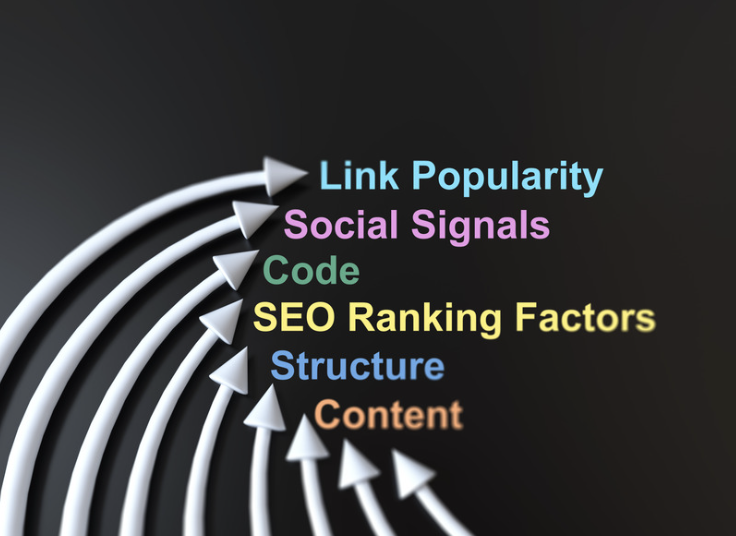Search engine optimization (SEO) has come a long way since the early days of stuffing keywords and using backlinks to rank higher on search engines. Today, Artificial intelligence (AI) has emerged as a game-changer, making it essential to develop winning SEO strategies that work with Google RankBrain Algorithm to rank higher on search engines. While some may worry about AI-generated content impacting SEO, Google has clarified that AI-generated content is not specifically tracked, and its presence doesn’t directly affect SEO. However, as AI becomes more prominent in SEO, it’s important to understand how to optimize content for this new paradigm and create winning SEO Strategies that work with Rankbrain Algorithm.
What Is RankBrain And Why Is It Important For Your SEO Strategy?
Unlike traditional algorithms with fixed rules, RankBrain is a highly flexible system that uses machine learning to adapt and evolve based on new data and user behavior. This innovative algorithm is capable of understanding the context and intent behind a search query, even if it’s never seen that query before, and delivers the most relevant results from Google’s massive index. Additionally, RankBrain has the ability to adjust the importance of other ranking factors depending on the query, taking into account factors like content relevance, link profiles and user engagement.
RankBrain is just one of the many AI-based algorithms that Google has developed in recent years. Other algorithms that use machine learning include:
1. BERT (Bidirectional Encoder Representations from Transformers): a natural language processing model that can understand the meaning and context of words and sentences in various languages and contexts.
2. MUM (Multitask Unified Model): a more advanced NLP model that can handle complex and multifaceted queries across different domains, languages and formats.
3. SMITH (Siamese Multi-depth Transformer-based Hierarchical Encoder): a deep learning model that can better understand long-form documents and passages by capturing their semantic structures and relationships.
4. Passage Ranking: a technique that allows Google to index individual passages within a webpage and rank them separately based on their relevance to a query.
These AI algorithms work together with RankBrain to provide more accurate and diverse search results for users. They also pose new challenges and opportunities for SEO in 2023.

What Does RankBrain Look For In High-Quality Content?
Google is constantly updating its algorithms to evaluate content for SEO rankings. It’s an adaptive system that evolves continually to reflect the latest trends and best practices in the industry. However, many content creators overlook some crucial factors that RankBrain values highly, thus missing out on an opportunity for a competitive edge.
To improve your SEO rankings, it’s essential to pay attention to these two critical factors when creating content:
1. Semantic Relevance and Topic Depth: RankBrain now seeks content that not only features the appropriate keywords but also exhibits a thorough understanding of the subject matter. It can discern pieces that deliver extensive, in-depth information, addressing various facets and subtopics associated with the primary theme. For example, if you’re writing about B2B sales strategies, delve into topics like account-based marketing, sales pipeline management and effective negotiation techniques. Employ relevant long-tail keywords, LSI (Latent Semantic Indexing) keywords and related concepts to demonstrate your expertise and authority on the subject matter.
2. E-A-T (Expertise, Authoritativeness and Trustworthiness): E-A-T (Expertise, Authoritativeness and Trustworthiness): RankBrain emphasizes the E-A-T principle to evaluate the credibility of content and its creator. To improve your content’s ranking in search results, showcase your expertise and authority on the subject matter and build trust with your audience through transparent information about the author, verifiable facts and reliable external sources. For instance, if you’re writing about supply chain management, cite credible industry reports or quote experts in the field to substantiate your claims. RankBrain has become increasingly proficient at identifying content that satisfies the E-A-T criteria, making investments in these areas crucial for successful SEO.
RankBrain uses mathematical calculations to analyze searcher behavior and determine the intention behind a search query. Instead of just relying on the quality of content or the number of links a website has, RankBrain considers various signals, such as user location and freshness of content, to provide the most relevant results.
For example, if someone searches for “marketing agency in Seattle,” RankBrain will analyze patterns in searcher behavior to determine the searcher’s intent. If the searcher is looking for a highly reputable marketing agency in Seattle, RankBrain may provide a search result for Three Girls Media which has a proven track record of delivering successful marketing campaigns for its clients and their consistent posting of fresh niche-based content.
How To Structure Content To Impress Rankbrain In 2023
SEO isn’t about outsmarting or exploiting Google’s algorithms; it’s about delivering the best possible experience and value for users while fulfilling their search intent. This means understanding how RankBrain and other AI algorithms function and identifying their priorities. Here are some suggestions for enhancing SEO strategies in 2023 by aligning with RankBrain:

1. Prioritize User Intent And Conversational Queries
In 2021, identifying keywords was essential for crafting content that aligned with users’ Google searches. However, advancements in voice search and natural language processing (NLP) have made search engines better at discerning the purpose behind queries, rather than just focusing on the keywords. As a result, content creators should concentrate on generating content that addresses user concerns and questions rather than merely incorporating keywords.
One approach is to utilize natural language queries as a content creation guide. These queries are more extended, more specific and more conversational than traditional keywords. They mirror how users speak instead of how they type. For instance, rather than utilizing “best SEO tips” as a keyword, consider “how can I enhance my SEO in 2023” as a natural language query. This enables the creation of content that is more pertinent, engaging and useful for your target audience.
In addition, the new algorithm takes into account the performance of a page across different devices, such as phones and laptops. Finally, RankBrain 2.0 puts a stronger focus on user intent – whether users are searching for something specific or simply browsing casually.
2. Optimize For Featured Snippets And Other SERP Features
In 2021, attaining a high ranking on Google’s first page didn’t guarantee traffic or conversions. With the introduction of various SERP features such as featured snippets, people also ask, video carousels and knowledge panels, Google aimed to offer users swift and straightforward answers without clicking on any results. Consequently, content marketers needed to optimize their content for these features to improve visibility and click-through rates.
In 2023, this tendency will persist as Google introduces more features and refines its algorithms for enhanced user experiences. Content marketers should arrange their content to allow Google to easily extract and display relevant information for these features. For example: utilize headings, bullet points, lists, tables, images, videos and schema markup to organize your content and emphasize key points. Tools like AnswerThePublic or SEMrush can help you discover questions users ask related to your topic, which you can then answer in your content.
3. Use Topic Clusters Instead Of Keywords
In the past, keyword research was the main focus for SEO, and content marketers prioritized using the right keywords to rank higher in search results. However, as search engines evolved it became apparent that this approach wasn’t enough for high rankings.
In 2023, you need to generate extensive and pertinent content that encompasses all aspects of a topic and addresses user intent. This approach, known as semantic SEO, concentrates on the meaning and context of content instead of solely on keywords.
Topic clusters are collections of interconnected content that link to a central pillar page addressing the core subject. By creating a network of linked pages that offer a comprehensive overview of a subject, you can signal their authority and relevance to search engines.
For example, to rank for the topic “selling on Amazon,” you should create a pillar page that explains the fundamentals of selling on Amazon, its importance and how to start an Amazon business. Then, generate cluster pages addressing subtopics such as “Amazon seller account setup,” “product sourcing strategies” and “Amazon advertising and promotion.” Each cluster page should contain internal links to the pillar page and other cluster pages.

4. Balance Data-Driven Insights With Content Creation And Creative Storytelling
While data serves as a valuable resource for SEO and content marketing, it shouldn’t be the sole driving force behind your content creation. Striking a balance between data and storytelling is vital for producing captivating and memorable content. Creativity and storytelling can distinguish your content, resonate with your audience emotionally and encourage them to act.
When crafting content about how your product or service can help customers achieve their objectives, you can use data to back up your statements and demonstrate results. However, incorporate storytelling techniques such as personal anecdotes, metaphors, humor, or visuals to make your points more relatable and persuasive. For example, Airbnb’s content marketing campaigns exemplify this approach of blending data and storytelling effectively by using data to demonstrate how their platform connects travelers with distinctive accommodations worldwide while also showcasing the personal stories of hosts and guests who form meaningful connections through Airbnb.
5. Use Multimedia And Interactive Elements
In previous years, content was not confined to only text but also featured images, videos, audio, infographics, charts, graphs, animations, quizzes, polls, surveys, calculators and other engaging multimedia elements. These aspects contributed to a better user experience, encouraged user engagement, sustained audience attention and simplified the presentation of complex information.
As we progress in 2023, the importance of multimedia and interactive components for SEO grows as users increasingly seek dynamic and customized content that meets their individual preferences and demands. You should adapt their content to include these elements thoughtfully and effectively. To achieve this, various tools can be employed, such as Canva or Visme for creating captivating visuals, Lumen5 or Vidyard for developing appealing videos and Typeform or Outgrow for designing interactive quizzes or calculators.
Remember that while incorporating interactive components you should not compromise page speed. A sluggish page can severely harm the user experience and lead to higher bounce rates and negatively impact your SEO.
6. Optimize For Voice Search
Voice search began to gain momentum as users started to prefer voice assistants like Siri, Alexa and Google Assistant to ask questions or perform tasks using natural language. Voice search is faster, easier and more conversational than typing and can be done on various devices such as smartphones, smart speakers or laptops.
To optimize content for voice search, you need to structure your content to answer specific questions users might ask using natural language. This involves using clear, concise language, brief sentences and paragraphs and addressing queries directly.
For instance, if you own a restaurant and want to rank for the query “what are the best dishes to try at [Your Restaurant Name] in 2023” through voice search, you should create a blog post or web page that provides a straightforward answer using natural language. Utilize brief sentences and paragraphs to break your answer down into easily digestible information, listing the top dishes and their descriptions. Addressing the query directly and using natural language will help your content rank better for voice searches, connecting you with users who prefer this method and ultimately driving more customers to your restaurant.
7. Prioritize URLs In Your Navigation Bar
The menu, which usually appears at the top of a site, helps users easily explore different pages and sections. Make sure to include links to your most significant pages, offering value to your visitors while reflecting your site’s purpose and objectives. Also, create straightforward, brief URLs that incorporate pertinent keywords for each page.
Suppose your website is dedicated to SEO services. In that case, your menu should contain links to your homepage, about page, services page, blog page, contact page and so forth. Use URLs that depict each page’s content accurately (e.g., https://example.com/seo-services/, https://example.com/blog/, etc.).
8. Regularly Post Fresh Content
RankBrain values content freshness, as it aims to deliver the most relevant and up-to-date information to users. As the internet becomes increasingly saturated with content mills producing low-quality, repetitive content, making content freshness a priority can set your site apart. Regularly updating your material with recent industry data, statistics and trends not only captivates your audience but also demonstrates to RankBrain that your website is a dependable and up-to-date source. Offering fresh, valuable content boosts your search engine ranking and enriches user experience, which in turn fosters trust and credibility for your online presence.
Conclusion
As Google prioritizes user experience, optimize your SEO strategies with the updated and best practices in 2023. Regardless of the advancements in AI technology, the ultimate goal is to make perusing your website easy and enjoyable. SEO is no longer just about using the right keywords or backlinks to rank higher on search engines. It’s about providing valuable content that meets user intent and engages with their needs and demonstrates expertise, authority and trustworthiness.

By investing in these areas, content creators can improve their SEO rankings and deliver a better experience for their audiences.
Need help staying informed and adapting to the latest trends and best practices. Three Girls Media is a full-service digital marketing agency in Seattle, WA that specializes in digital marketing for businesses of all sizes and industries. Contact us today for a free consultation and quote.
Special Offer:
Sign up for a complimentary consultation during January and receive an Email Marketing Guide valued at $475! We offer a 30-minute phone consultation with our CEO and can answer your questions and discuss your specific marketing needs – no strings attached. Call 360-955-1410 or contact us today to arrange your consultation!

